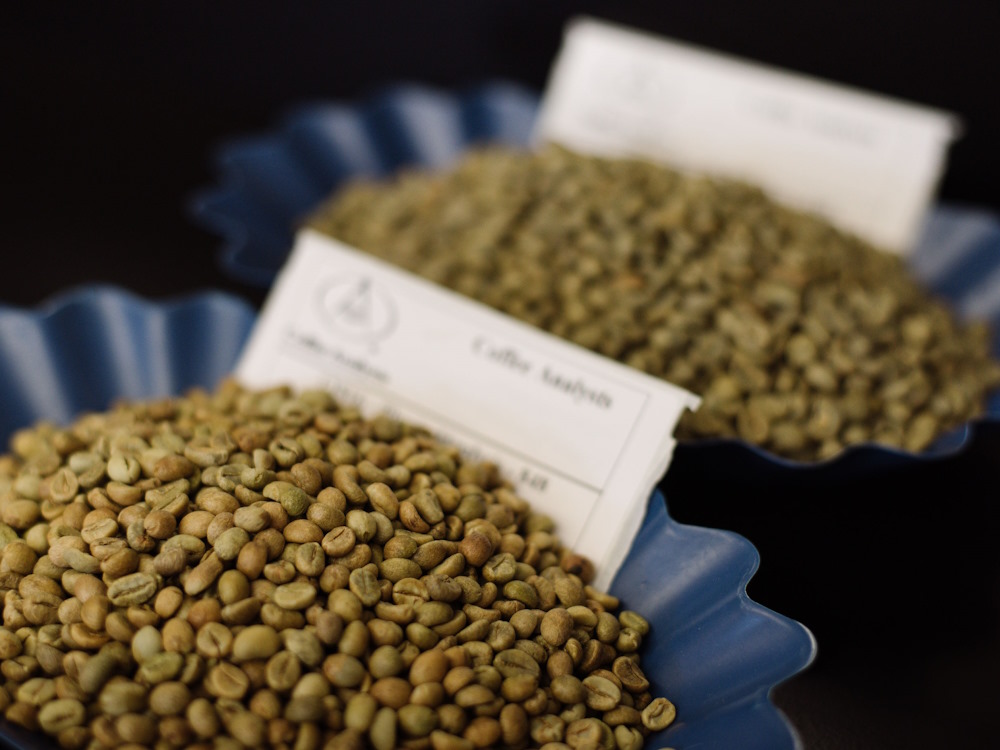Quality is an integral part of specialty coffee. The SCA’s 100-point scale has been the industry standard for 24 years, allowing Q graders to assign cup scores and ideally assess quality objectively. In early November 2024, the SCA officially adopted the defective and affective components of its new Coffee Value Assessment, which the organisation says helps broaden the scope of a coffee’s value and, therefore, quality.
Following growing consumer demand for diverse flavour profiles, many specialty roasters have started buying more coffees that score at least 84 points. This has been a key part of their marketing strategies, with some companies proudly emphasising their higher quality standards and baseline requirements.
Although 80 to 83-point coffees are classified as specialty-grade, the increasing number of roasters seeking higher cup scores highlights how expectations of quality have grown in recent years. As 84-point coffees take up more space on coffee shop menus and roastery offerings, it begs the question of whether the industry has unofficially raised standards to a point where coffees scoring between 80 and 83 points have lost some of their distinctive and desirable characteristics.
But redefining specialty-grade quality and flavour has major implications for the industry, especially for producers who would receive lower prices as a result. Moreover, in recent years, the industry’s perception of quality has widened to focus on more than cup score alone, prioritising a coffee’s holistic value, too.
To learn more, I spoke to Ian Fretheim, the Director of Sensory Analysis at Café Imports, and Spencer Turer, Vice President of Coffee Enterprises.
You may also like our article on how specialty coffee has improved standards for quality more widely.
Defining coffee quality
For decades, the Specialty Coffee Association’s 100-point scoring system has been the most widely used method to evaluate cup profile and overall coffee quality, creating a universal methodology and shared language for industry professionals worldwide. To be graded as specialty, coffee must score at least 80 points and contain no more than five primary defects per 300g sample.
Using the SCA’s cupping form, there are various gradations of specialty coffee:
- Scores of 80 to 84.99 are “Very Good”
- Coffees scoring 85 to 89.99 are “Excellent”
- Scores of 90 to 100 are “Outstanding”
“It’s always important to note that these scores are to define flavour quality only,” says Spencer Turer, the Vice President of coffee and tea testing consultancy Coffee Enterprises. “The SCA and Coffee Quality Institute both define specialty in the context of green coffee as a combination of cup characteristics (sensory quality) and grade attributes (physical quality).”
Recent updates to quality assessments
Although its use is widespread, the SCA point scale has received criticism over the years. Designed with washed arabicas as the ideal baseline cup profile (i.e., clean and bright flavours), it can often disadvantage natural and experimentally processed coffees when cupped side by side, which tend to have more complex and fruity flavour profiles.
To address this issue, in June 2024, the SCA introduced the new Coffee Value Assessment protocol. Developed to broaden the scope of quality evaluation, the new cupping standards include four distinct assessment stages:
- Physical – an evaluation of green coffee which assesses moisture content, physical appearance, and any visual damage to the beans. The results can be applied to a number of different grading systems
- Extrinsic – an evaluation of factors such as “identity”, certification, and origin
- Affective – an evaluation of the cupper’s personal opinion on coffee quality based on the 100-point scale
- Descriptive – an evaluation of a coffee’s flavour and aroma attributes with no positive or negative implications
Although some remain sceptical about the implementation of the CVA and how much value it adds to the industry, its intentions seem admirable. There’s a clear motivation to be more inclusive of the diversity of coffee flavour and different market preferences, as well as how a coffee’s holistic aspects impact quality perception.

Why roasters are buying more 84-point coffees
As specialty coffee consumption has increased in a growing number of countries around the world, more consumers have been exposed to higher-quality options. In turn, demand for differentiated flavour experiences has grown. Consumers now want more diverse, complex coffees with improved flavour clarity and better representation of origin, terroir, and processing methods.
For many roasters, 84-point (and above) coffees fit this bill. Often praised for their balanced and unique flavours, these coffees command premium prices but are still within budget for most specialty consumers looking for consistent and dependable offerings. In turn, they can make up the bulk of many specialty roasters’ offerings.
Following the rise in demand for 84+ coffees, the industry’s baseline quality standards have steadily increased. Throughout the 2010s, the emergence of micro roasters which predominantly focused on small-batch roasting of exclusive lots, made higher-scoring coffees (i.e. 87 to 89 points) more accessible.
“When quality that was once specialty and rare becomes commonplace and easy to access, companies will seek higher quality as a point of differentiation,” Spencer says. “Our collective success in encouraging producers to strive for quality and educating consumers on the possibilities of delicious, sweet, aromatic coffee has increased the supply and demand for it. Thus, the next phase of specialty is to seek even higher quality coffees – rarities that are not commonly available.”
The market for these coffees, however, remains small and always will. High-end micro lots require significant investment from producers that not all can afford in the long term, and they don’t always offer the flavour dependability that many consumers are looking for.
“In many cases, the 84 to 85-point range can be preferred to higher-scoring coffees as the latter may lack the sensibility or comfort of the former,” says Ian Fretheim, the Director of Sensory Analysis at green specialty coffee trader Café Imports.

Is there a need to raise the baseline for specialty coffee?
As 84-point coffees account for a significant portion of specialty roasters’ offerings, they inevitably raise standards and expectations of quality. “Regular” specialty coffees scoring 80 to 83.99 points that help roasters balance costs may lose their competitive edge, unable to offer the diverse flavour profiles customers are seeking.
Moreover, as brands continue to use cup scores as part of their marketing strategies to differentiate from competitors, consumer awareness of quality further increases, which raises industry-wide standards in turn.
However, the subjectivity of coffee quality evaluation means it’s all too easy to see discrepancies in cup scores.
“There is no such thing as an 83-point coffee that won’t also score 84. One point is within the margin of error for most cuppers,” Ian says. “If you blindly present an 83-point coffee to one person 100 times, you will return a normal distribution around 83 that will include 82 and 84 within a standard deviation.”
Ultimately, this raises the question of how valuable raising specialty standards from 80 to 84 points would be. Although the new CVA accounts for more than cupping score, this criterion still makes up a significant portion of the quality evaluation system.
“Changes for improvement are always welcome,” Spencer says. “However, I believe the word ‘specialty’ is overused in the coffee industry and has lost its true meaning because of ambiguity and misunderstanding regarding green coffee, roasted coffee, beverages, sourcing strategies, coffee companies, and even industry professionals.
“We need to have an easily understood definition of specialty that aligns with consumer expectations,” he adds. “Regarding green coffee, we should separate cup quality (sensory) from grade quality (physical) using different terminology that allows producers to establish premiums for individual quality indicators.”

Considering the industry-wide implications of redefining specialty coffee
As the specialty coffee sector starts to adopt the new CVA protocol, concepts of quality will inevitably shift further. No longer confined to a cupping score, the definition becomes much broader and more inclusive of the holistic aspects of a coffee’s identity, such as certifications, sustainability impact, and origin.
But cup scores still play a defining role in the SCA’s new cupping standards, which means that raising the minimum baseline for specialty coffee from 80 to 84 points would have major implications across the entire supply chain.
The most obvious challenge would be the widespread adoption of these changes across many different markets, which would require significant long-term investment.
Equally as important, producers would also be at risk of receiving lower prices, which could be devastating for smallholders who rely on premiums for specialty-grade lots.
“There is a risk that by raising the minimum specialty cupping score to 84 points, the price premiums for coffees that already receive 84+ points will increase because of their exclusivity,” Spencer tells me. “Demand for coffees scoring 80 to 83 would drop because they will no longer be considered specialty and thus reduce in value with reduced price premiums for the producers.”
He adds that consumers are also unlikely to benefit:
“Limiting specialty to a higher cup score may result in increased premiums for the new specialty quality standard, resulting in higher product prices for what was essentially the same level of quality.”
Ian, meanwhile, explains that exploring alternative quality evaluation methods can also be valuable. He says Café Imports uses the Coffee Rose: a digital cupping form that allows users to describe their experience with an intuitive flavour wheel.
“Our tasters don’t need to switch back and forth between subjective, objective, and discriminative modes using a confused cupping form or a mish-mash of numerous protocols,” he says. “It’s neither perfect nor universal, and it doesn’t need to be. It’s consistent and understandable in advance rather than made up on the spot.”
Demand for coffee is ever-changing
Following the pandemic, a Specialty Coffee Transaction Guide report indicated a 20% decrease in the number of “fancy coffee” (defined as 84+ points) and a 17% increase in “regular coffee” (80-83 points) contracts.
Given the recent 13-year high C price, roasters have been forced to adapt their sourcing strategies in similar ways to manage margins more effectively. By offering these coffees, roasters can cater to a wider audience that still values quality but may not be interested in the exclusive, high-end lots.
Spencer says, in theory, this should help to bolster future sustainable industry growth:
“Hopefully, as roasters evolve their sourcing and quality strategy from low 80s to higher cup scores, producers are receiving higher revenues to cover the costs of production at higher quality levels, and consumers are willing to pay premiums for better tasting coffees.”

With market prices unlikely to drop significantly in early 2025, demand for low-80s specialty coffee is likely to keep rising in the near term. Sourcing 80 to 83-point coffees is one of the most effective approaches for roasters who want to keep consumer prices as low as possible, and it has become an even bigger priority over the last few years.
Raising the baseline for specialty coffee quality would pose more challenges than solutions, especially given the current difficult market climate. But as the industry adopts new assessment protocols, we’re likely to see a shift in how we define quality.
Enjoyed this? Then read our article on why specialty coffee needs to find new ways to assess quality.
Photo credits: Julia Luckett Photography, Café Imports
Perfect Daily Grind
Want to read more articles like this? Sign up for our newsletter!
The post Why starting specialty coffee at 84 points would pose more challenges than solutions appeared first on Perfect Daily Grind.

